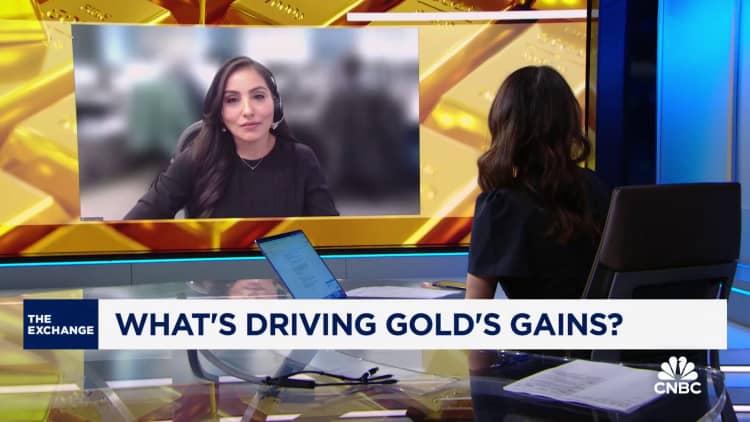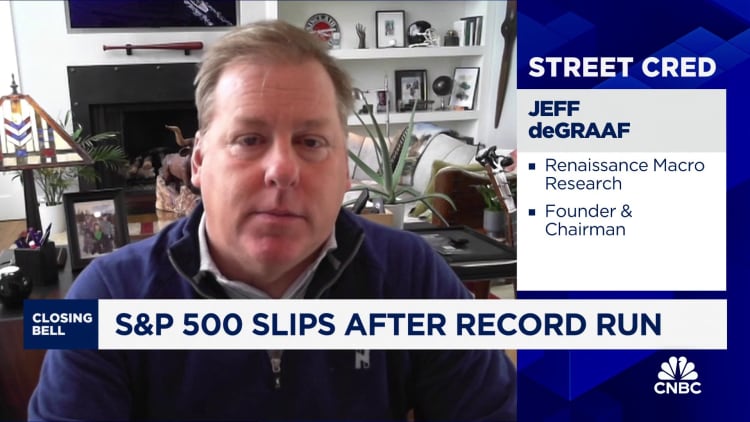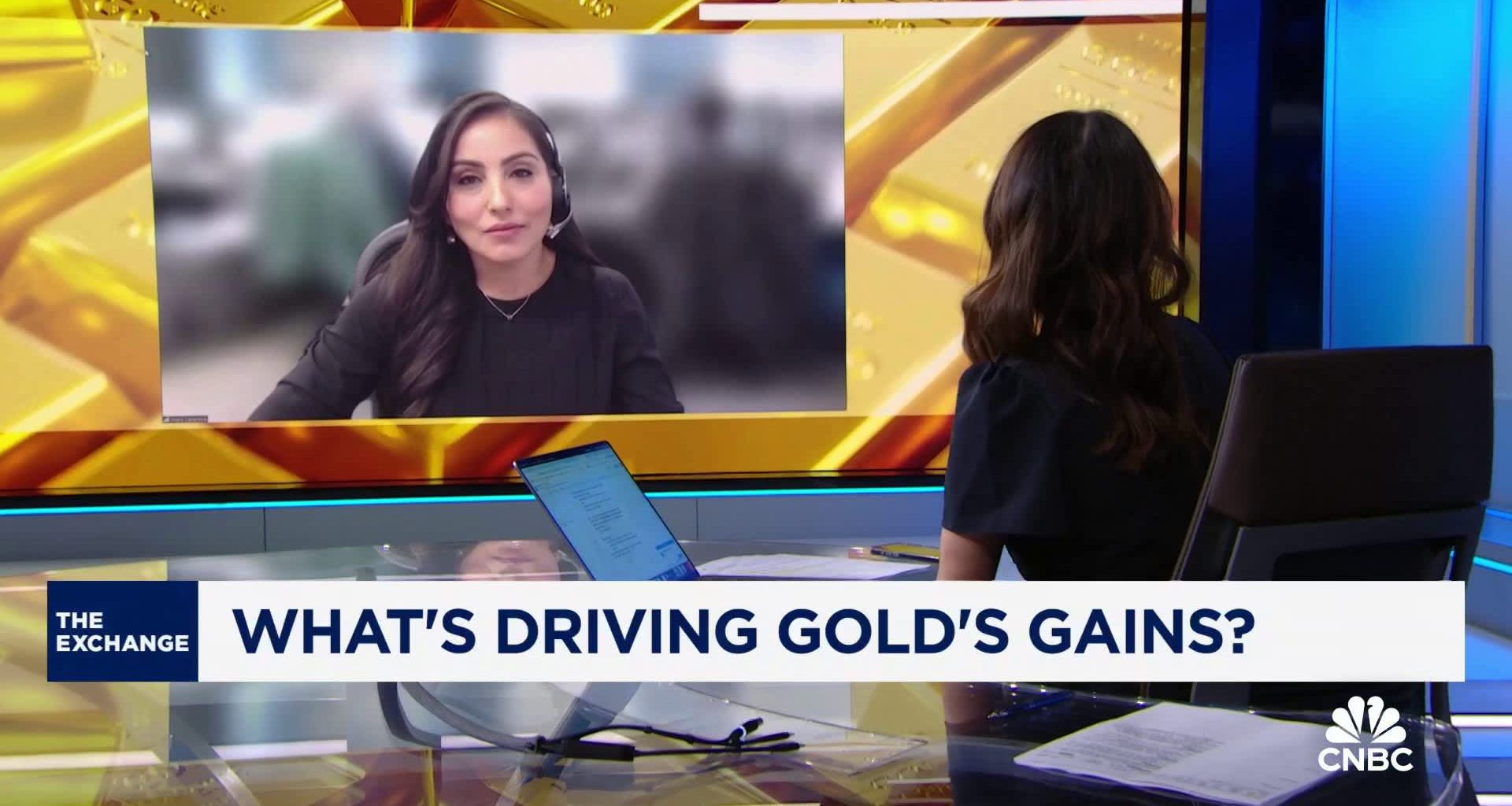
Geopolitical and structural factors have put gold on course to hit $2,600 per ounce within a year, according to one market veteran.
The precious metal has hit successive record highs this year, including another on Thursday when spot gold broke above $2,300 before easing slightly. Early Friday it was trading around $2278 per ounce.
The reasons behind its climb — and how much higher it can go in the near to medium-term — are hot topics among investors, especially as stock market gains remain robust.
Juerg Kiener, chief investment officer at Swiss Asia Capital, told CNBC’s “Street Signs Asia” on Wednesday that his forward curve analysis for gold “looks fantastic.”
“If you look at your forward curve for a year it’s about 26 [$2,600]. I think we might be really fast as we take 23 [$2,300] out, it has a lot of pent-up demand,” he said.
He added that an inventory collapse in the gold market is putting “a lot of derivative structures at risk.”
“It puts probably a lot of structures which are in the market playing gold at risk too, because [traders] might not be able to cover [their short positions]. And if I say that 26 is for me just a forward curve, in case we get a short squeeze the numbers will go much higher.”
A short squeeze is when the price of an asset rises sharply and those with short positions — who were betting on price falls — are forced to buy the asset to prevent more losses, typically driving up the price even further.
Kiener also cited geopolitics, a shift to a “multipolar world,” and changing international trade structures as reasons for his bullishness on the gold price. Another was governments “printing money like there’s no tomorrow,” he added.
Gold is typically viewed as a so-called safe haven asset and also as a potential hedge against inflation.
Geopolitics has been cited by several analysts as the basis of a medium-term bullish case for gold, amid the wars in Gaza and Ukraine, the upcoming U.S. election and the possibility of recession in major economies. Another commonly cited factor is the likelihood of interest rate cuts by the U.S. Federal Reserve, of which three are expected this year. Lower borrowing costs tend to increase the appeal of gold as investors shift away from fixed-income assets like bonds.
“We’ve got a massive flow of precious metal leaving the West,” he said, adding that there was a “real shift” toward precious growing demand in Asia and the BRIC countries more broadly.

Chinese investors and households showed increased demand for gold in 2023, according to the World Gold Council, as the country’s property market remained in turmoil and stock markets tumbled.
Central banks have also increased their gold reserves over the last year, supporting prices.
Read More: World News | Entertainment News | Celeb News
CNBC










